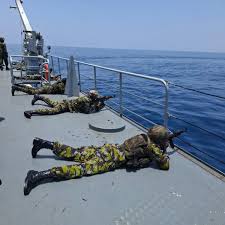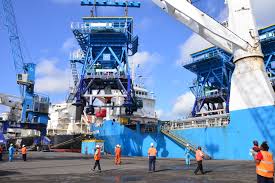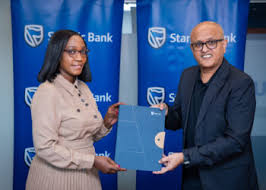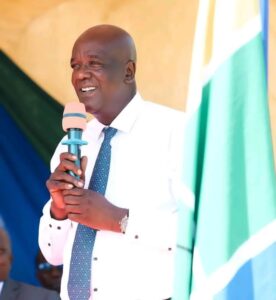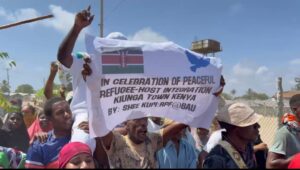Step Toward Maritime Excellence: Reflections on Dr. Bwanaheri Lali’s Meeting with KPA

Dr. Bwanaheri Omar Lali, Port Captain at Inchcape Shipping Company, (Photo/ Courtesy)
By Andrew Mwangura
Email, thecoastnewspaper@gmail.com
On August 27, 2025, a significant meeting took place in Mombasa that could mark a turning point for Kenya’s maritime sector. Dr. Bwanaheri Omar Lali, Port Captain at Inchcape Shipping Company, sat down with Capt. William Ruto, the Managing Director of the Kenya Ports Authority (KPA), to discuss critical operational and efficiency matters concerning the ports of Mombasa and Lamu.
This dialogue, rooted in a shared vision for progress, underscored the urgent need to elevate Kenya’s ports to meet the demands of a rapidly growing regional economy. The outcomes of this meeting signal a renewed commitment to operational excellence, stakeholder collaboration, and the strategic positioning of Kenya as a maritime hub in East Africa.
The discussion between Dr. Lali and Capt. Ruto was not merely a routine exchange but a focused effort to address longstanding challenges and seize emerging opportunities.
At the heart of their conversation was the need to streamline berthing windows, a critical factor in ensuring vessels can dock and depart with minimal delays. Predictable scheduling is the backbone of any efficient port, and the agreement to fix and optimize these windows reflects a pragmatic approach to reducing congestion and enhancing reliability. For shipping companies like Inchcape, this commitment translates into cost savings and improved service delivery for clients, from local importers to landlocked neighbors like Uganda and Rwanda.
Mombasa Port, which handled 41.1 million metric tonnes of cargo in 2024—a 14.1% increase from the previous year—has been grappling with capacity strains. By prioritizing berthing efficiency, KPA is taking a proactive step to ensure the port remains a competitive gateway for East Africa.
Another key pillar of the meeting was the focus on port equipment. Both Mombasa and Lamu Ports have faced challenges with equipment availability, which can bottleneck operations and slow vessel turnaround times.
Capt. Ruto’s pledge to enhance equipment utilization and availability is a welcome development. Recent investments in state-of-the-art Super Post Panamax Ship-to-Shore gantry cranes and rubber tyre gantry cranes have already enabled Mombasa to handle larger vessels, with a capacity of up to 10,000 TEUs. Extending such upgrades to Lamu, which has struggled to find its footing since its commissioning in 2021, could unlock its potential as a transshipment hub.
The decision by French shipping giant CMA CGM to shift all transshipment cargo to Lamu starting next month is a testament to the port’s growing relevance. Ensuring that equipment is not only available but also optimally deployed will be critical to sustaining this momentum and alleviating pressure on Mombasa.
Labour deployment, another focal point of the meeting, is equally vital to port efficiency. Ports are labour-intensive environments, and the effectiveness of operations hinges on the workforce’s ability to perform seamlessly.
Dr. Lali and Capt. Ruto’s review of labour deployment signals an intent to address inefficiencies, whether through better training, optimized shift scheduling, or improved coordination with shipping agencies.

This is particularly significant given the resistance from labour unions to certain reforms, such as the proposed Public-Private Partnerships (PPPs) for port operations. By strengthening labour deployment, KPA can foster a more collaborative environment, ensuring that workers are not only efficient but also invested in the ports’ success.
This approach aligns with the broader goal of maintaining Mombasa and Lamu as employer hubs, supporting thousands of jobs in the region.
The emphasis on operational efficiency and quick vessel turnaround times is perhaps the most ambitious aspect of the meeting’s outcomes. Mombasa Port, with a design capacity of 2.18 million TEUs, was already at 92% capacity by July 2025.
The port’s ability to process 1.82 million TEUs this year, compared to 1.62 million in 2023, reflects significant progress.
However, as cargo volumes continue to outpace infrastructure expansion, the risk of delays and demurrage charges looms large. Capt. Ruto’s assurance that vessels will continue to berth on arrival, provided performance standards are met, is a bold commitment to keeping Kenya’s ports competitive.
This policy, if consistently implemented, could set Mombasa and Lamu apart from regional rivals like Dar es Salaam, which has been modernizing rapidly. Efficiency is not just about speed; it’s about reliability and cost-effectiveness, qualities that shippers prioritize when choosing a port.
The meeting also highlighted the critical role of stakeholder support in driving these reforms. The confirmation of strong backing from shipping agencies and other port stakeholders is a promising sign. Kenya’s ports serve not only domestic needs but also landlocked countries like South Sudan, Rwanda, and the Democratic Republic of Congo.
The success of Mombasa and Lamu depends on a delicate ecosystem of shippers, transporters, customs officials, and private sector partners.The 21-point agenda outlined in 2023, championed by President William Ruto, emphasized stakeholder collaboration to eliminate non-tariff barriers and streamline cargo clearance.
Dr. Lali’s engagement with Capt. Ruto reinforces this collaborative spirit, ensuring that the private sector’s insights are integrated into KPA’s strategy.
This partnership is particularly crucial as KPA navigates the complexities of PPPs, which have faced resistance from coastal leaders and unions but remain a viable path to funding infrastructure upgrades without straining public finances.
The broader implications of this meeting extend beyond operational tweaks. Kenya’s ports are at a crossroads, with rising regional competition and global expectations for efficiency and sustainability.
Mombasa’s role as the premier port for East and Central Africa is under pressure, yet Capt. Ruto’s leadership has already delivered tangible results.
The port’s cargo throughput grew by 22.7% in TEUs from 2023 to 2024, and transit cargo volumes rose by 17.6%. Lamu, meanwhile, is poised to complement Mombasa by specializing in transshipment, reducing congestion and positioning Kenya as a two-port powerhouse.
The commitment to environmental sustainability, evidenced by investments in modern oil terminals and reduced road transport through initiatives like the Kisumu oil jetty, further enhances Kenya’s maritime credentials.
Dr. Lali and Capt. Ruto’s meeting is a microcosm of the broader effort to transform Kenya’s ports into world-class facilities.
It reflects a shared understanding that efficiency, reliability, and stakeholder collaboration are non-negotiable in a competitive global market.

While challenges like infrastructure constraints and resistance to PPPs persist, the outcomes of this discussion—streamlined berthing, enhanced equipment, optimized labour, and stakeholder support—offer a clear path forward.
As Mombasa and Lamu Ports continue to evolve, this meeting may well be remembered as a pivotal moment in Kenya’s journey toward maritime excellence, ensuring that its ports remain the beating heart of East Africa’s trade and economic growth.
The author is a policy analyst specializing in maritime governance and blue economy development.

